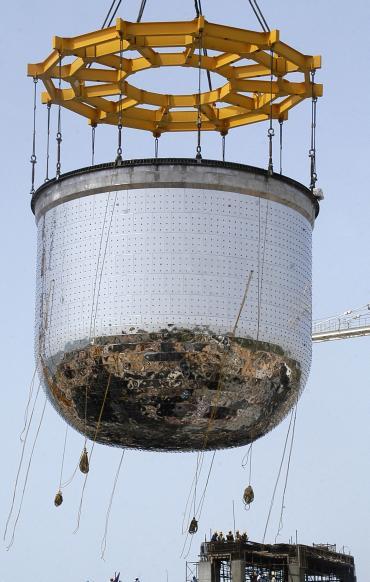
After three decades of hard work, and despite the devastating tsunami of 2004, the 500 megawatt Fast Breeder Reactor at Kalpakkam is coming up at a furious pace, says Shivanand Kanavi who visited it recently. It also happens to be the first tsunami-ready reactor in India.
Fast breeders have entered journalistic and parliamentary lexicon during the debates on the India-United States nuclear deal.
According to an apocryphal story, a venerable member of Parliament, dazed by the sudden influx of nuclear physics in the Central Hall of Parliament, did not want to be left behind in the sound byte game and said, "We are good at fast breeders. That's how we became one billion-strong"!
Be that as it may, the fast breeder technology, in its essence, is more than 50 years old. Most people do not know that the first ever kilowatt of power from a nuclear reactor, anywhere in the world, came in 1951 from a fast breeder reactor, Experimental Breeder Reactor I at Idaho Falls in the US.
So, what are these new-fangled objects, the fast breeder reactors? If we care to struggle with a little bit of nuclear physics, we might profit from it. Here are a few simple incentives to cross the knowledge hump.
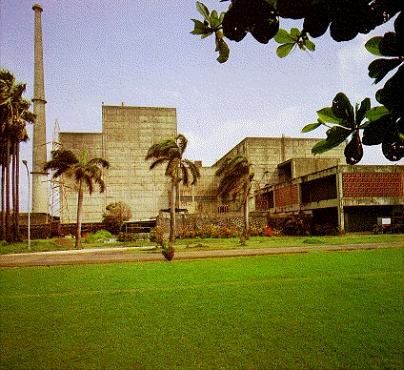
The prototype fast breeder reactor under construction at a furious pace in Kalpakkam is scheduled to be commissioned in June 2012. According to SC Chetal, of the Indira Gandhi Centre for Atomic Research, the two fast breeder reactors of 500 MW each, which are expected to come on stream in Kalpakkam by 2014, are being configured to produce power at the rate of Rs 2 per unit (in today's constant rupee terms).
"We are doing our best to demonstrate that fast breeders are not only necessary for energy security but are also an economically viable technology for power production," adds Chetal.
You want one more dollop of nuclear enthusiasm, then take this! "India's total power production today is 100,000 MW. The potential power from the fast breeder cycle is 550,000 MW. This is a conservative estimate, the real optimists rate it as 800,000 MW. And all this without considering the imported uranium available to India after the lifting of the Nuclear Suppliers Group sanctions in 2008," says Baldev Raj, a leading metallurgist, who leads fast breeder research in India as director, Indira Gandhi Centre for Atomic Research.
All this is not pulling a fast one on behalf of fast breeders, but a product of simple physics and arithmetic. In the power reactors currently in use at Rawatbhatta, (Rajasthan), Kalpakkam (TN), Narora (UP), Kakrapar (Gujarat), Kaiga (Karnataka) and Tarapur (Maharashtra), only 0.7 per cent of the fuel can be burnt to produce electricity.

That is because natural uranium mostly contains U238 and only 0.7 per cent of U235. It is only U235 that can be split using a slow neutron beam, producing enormous amounts of heat, to boil water, generate steam and run a turbine like in any other power station.
Whereas U238 is not fissile, however, some of U238 converts itself into plutonium (Pu239), if exposed to fast neutrons. This new element, Pu239, can be easily burnt to produce power or to make nuclear weapons.
India invested, way back in the 1960s, in Bhabha Atomic Research Centre, to develop the technology to reprocess spent fuel rods from power reactors and extract plutonium from it.
"If we mix 25-30 per cent of plutonium with U238 and expose it to fast neutrons in a reactor, the plutonium will burn and give us about 20 times more power than the natural uranium reactors now in operation," said Baldev Raj, who is also the current president of the prestigious Indian National Academy of Engineering.
"Meanwhile, some of the U238 in the fuel would absorb some fast neutrons and get converted again into plutonium. Since roughly 1.1 kg of plutonium comes out of the spent fuel due to this conversion, for every 1 kg that was initially put in the fuel rod, such reactors are called breeder reactors.
"Since fast neutrons are used to trigger the chain reaction, such reactors are called fast breeder reactors," he added.
Additionally, if we cover the reactor core with a blanket of either U238 or thorium, then this blanket captures some of the fast neutrons coming out of the core, which would have escaped and been wasted. On reprocessing this irradiated blanket, we could recover either Pu239 or U233.
Thus originated Homi Bhabha's nuclear road map for India; to first master the natural uranium reactors, produce power, reprocess the spent fuel and recover plutonium from it. Burn this plutonium in fast breeder reactors to produce more power. Reprocess the spent fuel and the blanket of U238 and thorium, obtain more Pu239 and U233. Burn the new U233, along with a mixture of thorium, in another set of power reactors and so on, achieving nirvana of electrical power.
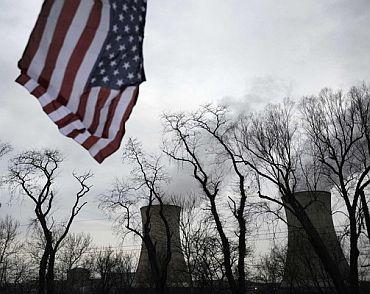
As a scheme on paper, it was simply brilliant! It made use of the limited resources of Indian uranium and did not get involved in the expensive uranium enrichment technology, as Iran is doing now.
Instead, it used the expertise of nuclear chemists and chemical engineers to develop the plutonium recovery technology from spent fuel rods and invested in developing the fast breeder and the thorium technology.
However, two major hurdles confronted the plan. One, all those who were investigating the fast breeder technology, such as the US, the United Kingdom, Germany, France and Japan lost interest in it for various reasons.
Firstly they had abundant supply of cheap uranium from Canada, Namibia, Niger and Australia; secondly, the US started actively discouraging it, since the US feared that plutonium recovery technology would spread among a host of countries, when plutonium is the preferred bomb making material.
Until recently, the US was successful in persuading other countries from developing fast breeder technology any further.
Russia and India are the only two countries which have decided to continue on the path. Of course, with today's nuclear renaissance, many countries want to revive their fast breeder programmes. Russia has a working fast breeder reactor, BN600, and is engaged in now designing even more powerful fast breeder reactors.

In India, the initial work on fast breeders started in early 1970s, at Kalpakkam, with a little help from France. However, after the peaceful nuclear explosion experiment in 1974 (Pokhran-I), France withdrew all co-operation in nuclear technology and so did Canada, the US and the rest of the world.
Incidentally, one could utter 'peaceful nuclear explosion', an oxymoron if there was one, with a straight face, because no matter what the US, Canada, France, Russia, etc, say now, back in the 1960s and 1970s, the same word was very legit. According to data available up until 1988, 115 peaceful nuclear detonations were carried out in what was once Soviet Union.
These nuclear explosions were used for the creation of water reservoirs, canals, mines and gas reservoirs, among other things. They were also employed for extinguishing gas fires and for seismic research.
The US started its 'peaceful nuclear explosion programme' way back in the 1950s, as part of Eisenhower's 'Atoms for Peace' proposal. Named Project Plowshare, it was publicly announced on June 6, 1958. The name had its origin in the Bible:
And they will have to beat their swords into plowshares and their spears into pruning shears. Nation will not lift up sword against nation, neither will they learn war anymore -- Isaiah 2:4
Between 1957 and 1973, as many as 27 experiments were carried out in the US, using a total of 35 nuclear devices. A formal treaty, 'Peaceful Nuclear Explosion Treaty-1976', was signed by Gerald Ford and Leonid Brezhnev, which came into force in 1990, whose text could be easily accessed from US government websites.
What was hailed as a peaceful initiative of nuclear weapon states was, however, decried as a rogue act when India conducted its experiment in 1974. The result was a complete unilateral cessation of co-operation on civilian nuclear technology with India and, in fact, all high-tech cooperation with India in general.
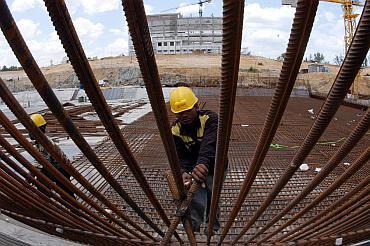
But in all these lost decades, the Indian nuclear scientists at Kalpakkam and elsewhere had to toil to produce everything themselves; they could not buy what a Japanese or French fast breeder technologist could buy easily from the open market.
But they rose to the challenge, ignoring constant needling from ill-informed sections of the media that India's nuclear programme was a white elephant. They converted adversity into opportunity, thought out of the box and innovated.
Thus, the Indian fast breeder test reactor, which became operational in 1985, became the first reactor in the world to use uranium and plutonium carbide fuel. In the process, they also learnt how to use liquid sodium as a coolant, an admittedly difficult technology.
Moreover, a host of industrial vendors were handheld and primed to produce high-quality nuclear equipment, machined to high precision, within tough deadlines.
Today, after 20 years of experiments, they have not only confidently designed a 500 MW prototype fast breeder reactor, but unlike most prototypes, have actually put their reputation on the line and committed to produce commercial power at a reasonable rate for the grid.
This reactor will use uranium and plutonium oxide fuel, which will give even more power than the earlier carbide fuel.

Interview with Dr Baldev Raj, director, IGCAR, Kalpakkam
Firstly, when is the PFBR going to be commissioned?
We are planning to commission in June 2012 and we are very confident because the uncertainties have been removed. This being the first FBR in the world in the last 30 years, the international experience was also limited. So we had to do a lot of mock-up trials especially at the site.
For example, doing a 13-metre stainless steel weld with very small tolerance on eccentricity; lowering a roof dome of 230 tonnes with a circumference tolerance of 3 mm in 13 metres and so on.
It is a result of confluence of the best minds of industry and the Department of Atomic Energy. We can very confidently say that the technology has been mastered and is deliverable on site. R&D has been converted into technology. We have built a very competent young team.
By commissioning, you mean the actual loading of the fuel and achieving criticality?
Yes. After that it will take 6-9 months to be connected to the grid. We want to go step by step because it is a very large core with a large amount of plutonium and sodium. We are doing it for the first time.
How many tonnes?
In the actual vessel there will be 11 tonnes of sodium and two tonnes of plutonium. We can decide to go low power and then high power and so on.
How many tonnes of uranium will be there?
About eight.
This will be carbide or oxide fuel?
This will be oxide. Since it is a large investment we made a sub-assembly for validation with all the components coming from India and that sub-assembly of our design gave us 110,000 MW day per tonne.
We are yet to do the post-radiation examination but we have studied the power output and there was no breach of the cladding. No problem in handling. It was completed two months back.
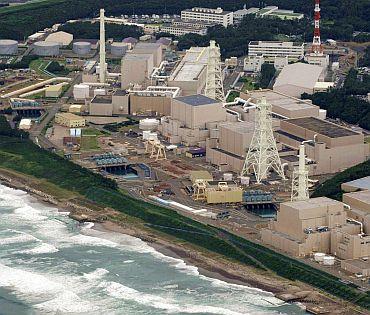
After the 2004 tsunami there must have been some design changes and new protective measures put in for any such eventuality. Can you explain them?
We had a national committee of best experts. It examined the measures already taken. This exercise was done for the whole Kalpakkam campus and not just the fast breeder. It covered the residential campus, the MAPP reactors and IGCAR. We found that this place was well designed for the tsunami of the kind we had.
If you recall, we were back in operation within two weeks. However, the foundation of the fast breeder which was being built at that time had a deposit of the material that came with the tsunami.
So we studied what degradation the concrete had gone through due to the deposit, whether sodium or chlorine has gone in; what has happened to the long-term durability of the foundation etc.
We did modelling as well as actual testing. The foundation was okay but after discussion with the regulatory body and departmental discussions, we decided to put a barrier layer and a fresh foundation was laid on that and we carried on.
So that also elevated it further?
Yes that was another by-product, it got elevated by another two metres.
What about levees and barriers?
They were already there but we redesigned it. More important was the psyche of the people in the township because there were 30 deaths. Many people wanted to leave the organisation itself due to family pressure.
We have used boulders, mangroves and a unique barrier which will take a tsunami even greater than the last one. We also put in an alarm system based on seismic events around the world.
Anyway, our reactor people constantly observe all geological events so we have a warning system based on that irrespective of what the country decides to do. This warning is given to the villages and all our people.
We use hooters along the coast. We have also educated the people on disaster management. The biggest challenge for me was to keep the people together and give them confidence. Whatever happened was a natural calamity but we can be prepared for it in the future.
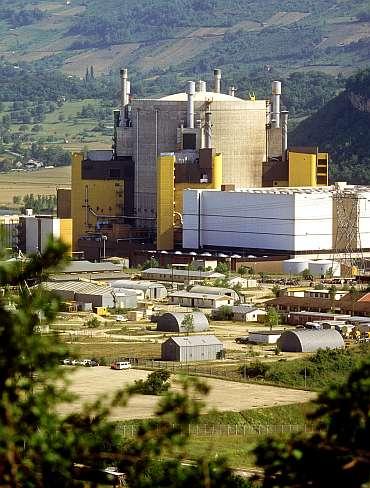
How would you describe the safety features built into the fast breeders?
The fast breeder satisfies all the current safety norms for nuclear reactors. There is a steady state of the nuclear reactor system. There can be transient states. These transient states should not damage the core leading to an accident.
So there are various mechanisms set up to see that the core is not damaged during any such event.
The reactor may be crammed so that power is reduced, controlling the temperature and the neutronics. In addition, in our system there is sodium, which catches fire if it comes into contact with air.
So one should prevent sodium leaks and have large number of sensors to check for leaks. Sodium in contact with moisture produces hydrogen so we need to detect even small amounts of hydrogen and so on.
In short, there are some generic safety measures that prevent the transient to affect the core and then there are specifics, like in our case sodium-related. There are design-based accidents and non-design-based accidents which one needs to take care of.
There are dumps to remove sodium?
They are there in critical systems. We do not like to totally shut down the reactor system, as sodium solidifies on cooling and then it becomes a problem to restart the system. So certain heaters are installed.
You have gravity-based systems?
The dumping systems are gravity-based systems, thus even if there is total power failure etc as it happened in Fukushima nuclear plant (in Japan after the recent tsunami), we will have safety.
Do you classify it as third generation or better in the normal parlance, in terms of safety?
In fact fourth generation reactors that are being talked about are fast breeders or molten salt reactors. They are sustainable. In generation there is economy and safety which defines it. In our case, if you look at the whole fuel cycle, you have to do much less uranium mining.
Plus, the long-lived radioactive actinides in the waste are recycled and burnt so that repository load decreases.
In economy a fast reactor would be expensive compared to boiling water reactors but if you put up 20 of them then it would be comparable to water reactors. This can be built in five years. We have a complete road map and we are making the essential design changes to ensure that.
How do you compare the safety systems there with that of European Pressurised Reactor from France or VVER (water-cooled, water-moderated energy reactor) from Russia?
For the common man we have to ensure the same level of robustness as far as safety is concerned even if the underlying science is different. Every reactor system has a specific dynamics of steady state, transient and accidental.
Those scenarios are discussed between the designers and utility and then the regulatory boards.
Many times the regulators ask us to do more calculations and modelling or experiments. The EPR is an evolutionary reactor, where they have built 1,000 MW and now they are going for 1650 MW. Fast reactors have been built in France, Russia etc we have studied their experience and have also studied various scenarios, seismic qualifications, thin structures etc.
We have ensured that these reactors are comparable to water reactors. We have barriers and margins. There are multi barriers and there are margins at each barrier, then the damage at each barrier in the case of accident becomes less and less.
Even in the extreme case of core meltdown, where will it go, will it go critical, how much will leak out etc -- even those issues are studied.
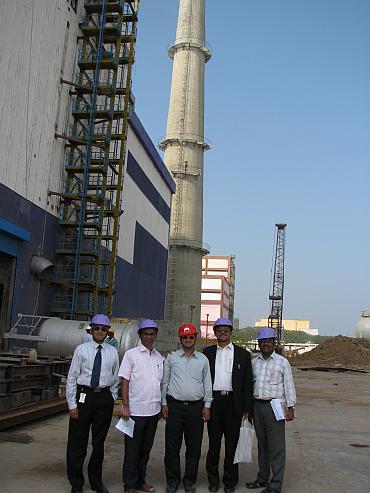
In the case of EPR some anxiety is there because of the size of the Jaitapur project. For example, we are building 2x1000 MW in Koodankulam but nowhere in the world are there10,000 MW nuclear islands, so how do you assure the public that the environmental impact or sea temperature rise would be tolerable?
There are internationally accepted scientific environmental impact studies and modelling. That is not a problem, so is the sea temperature issue.
Radiation hazard-related issues are no longer being raised in nuclear projects. Nowadays it is all about land acquisition policy and the possible effect on marine life due to sea temperature rise.
Land acquisition is not a science issue but others can be satisfactorily answered even to the last citizen of the nation, because livelihood is involved and climate change issues are involved. Land acquisition is a political question, which has to be sorted out in a democratic way.
In FBR, is fuelling on a campaign mode or continuous?
It will be in a campaign mode unlike the PHWRs (pressurised heavy water reactors) where it is continuous. We have designed and validated our fuel elements for 100,000 MWday/tonne burn rate, but in the future we aim to design and validate for 200,000 MWday/tonne. Then we will change the cladding material, wrapper material and go for advanced materials.
How long will your initial load of 10 tonnes of fuel last?
Two years at 100,000 MW/day.
Just to compare, how much does the VVER in Koodankulam or EPR yield?
They yield 75,000 MWday/tonne. The advantage is the life of the fuel element is only two years. So I can put my new advanced fuel with higher burn rate right in this reactor after two years.
Author's note: India is already at the cutting edge in research publication in fast breeders and thorium reactors. We look forward to the commissioning this landmark reactor. Wish you all the best.
Soon the fast breeder at Kalpakkam will go online, taking us to the very cutting edge. It is to be noticed that our scientists achieved all this on humble government salaries, whereas surely these brilliant engineers and scientists would have made millions of dollars in the greener pastures of Silicon Valley, as many others, whose success we toast, did!